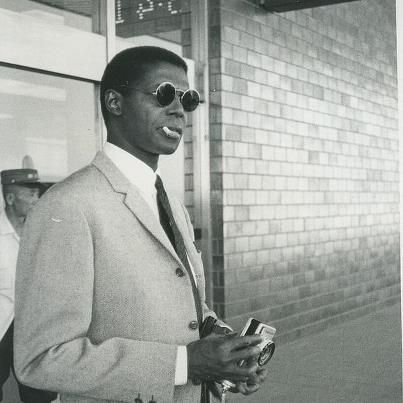

The audio quality, restored from the original recording made at the club by the flautist Joe Brazil on a reel-to-reel machine, is far better than adequate. Not surprisingly, given the sustained intensity and unbroken beauty of what the Penthouse audience has been hearing, there’s a lengthy silence at the end before the applause begins. As for Coltrane himself, the beautifully controlled winding-down on the concluding “Psalm”, arco basses echoing the tenor, is as nakedly affecting as anything he ever played.īy comparison with the unsuccessful sextet versions of two of the movements Coltrane recorded on the day after the original studio session, when he experimented with adding the tenor of Archie Shepp and the bass of Art Davis to the quartet, this is fully realised music, all its elements held in perfect balance. Jones’s interlude is a six-minute solo tour de force that sets up the bravura performance of “Pursuance”, on which Tyner plays what might be one of his mightiest solos, ideas flooding from the keyboard at a blistering 80 bars (or 320 beats, if you prefer) per minute. (In the third and fourth, they play consecutively.) Ward has a beautiful solo on “Resolution”, the Panamanian saxophonist - later a valued partner of Don Cherry and Abdullah Ibrahim - displaying his personal approach to Eric Dolphy’s angular phrasing. In the first interlude, Garrett and Garrett play together, entwining their pizzicato lines. Following Coltrane’s opening solo, Sanders’ soft-edged buzzsaw lifts “Acknowledgment” to another level of energy, driven by Jones’s Latin-inflected barrage. Well over twice as long, at 75 minutes, as the original, this version allows the listener to hear the new initiatives in the context of a familiar, albeit flexible, structure, which may help some to make “sense” of it. With the quartet augmented by Carlos Ward on alto, Pharoah Sanders on tenor and Donald Garrett on bass, the approach is far looser, with solo space for the guests and the individual movements separated (or linked) by interludes featuring solo passages by the bassists and the drummer. The Seattle version, although following the same scheme, is very different in approach. The quartet had played the four-section masterwork at the Antibes jazz festival in the summer of 1965, sticking close to the studio blueprint.

From Ascension, released in January 1966, to the benefit concert at the Olatunji Center of African Culture in New York in 1967, this last music inspired some and infuriated others, and continues to do so.įor those still searching for a key to unlock the apparent mstery of Late Coltrane, the release of a hitherto unknown live version of A Love Supreme, recorded in October 1965 on the last night of a week-long run at the Penthouse in Seattle, provides a perfect portal to his changed universe. His subsequent music, often featuring expanded versions of the line-up, with more horn players and percussionists, tended to stir up trouble among those who didn’t appreciate his engagement with the newer forms of expression that freed him from the last vestiges of Western song-form. But its explicitly devotional message hinted at the direction he was about to take, towards a music in which the individual notes were less important than the feelings they expressed and the spiritual release they sought. Formally, the album retained the by-then familiar and much admired approach of his classic quartet, with McCoy Tyner (piano), Jimmy Garrison (bass) and Elvin Jones (drums). With the original studio version of A Love Supreme, recorded in December 1964 and released a month later, he reached a pinnacle that marked the end of his middle period and signalled the beginning of something new. “Late Coltrane”, as the music of his last two years is known, provides an endless source of speculation over its intention and argument over its value. When John Coltrane died in the summer of 1967, aged 40, he left us engaged in a discussion that will go on for as long as people are still listening to his music.


 0 kommentar(er)
0 kommentar(er)
